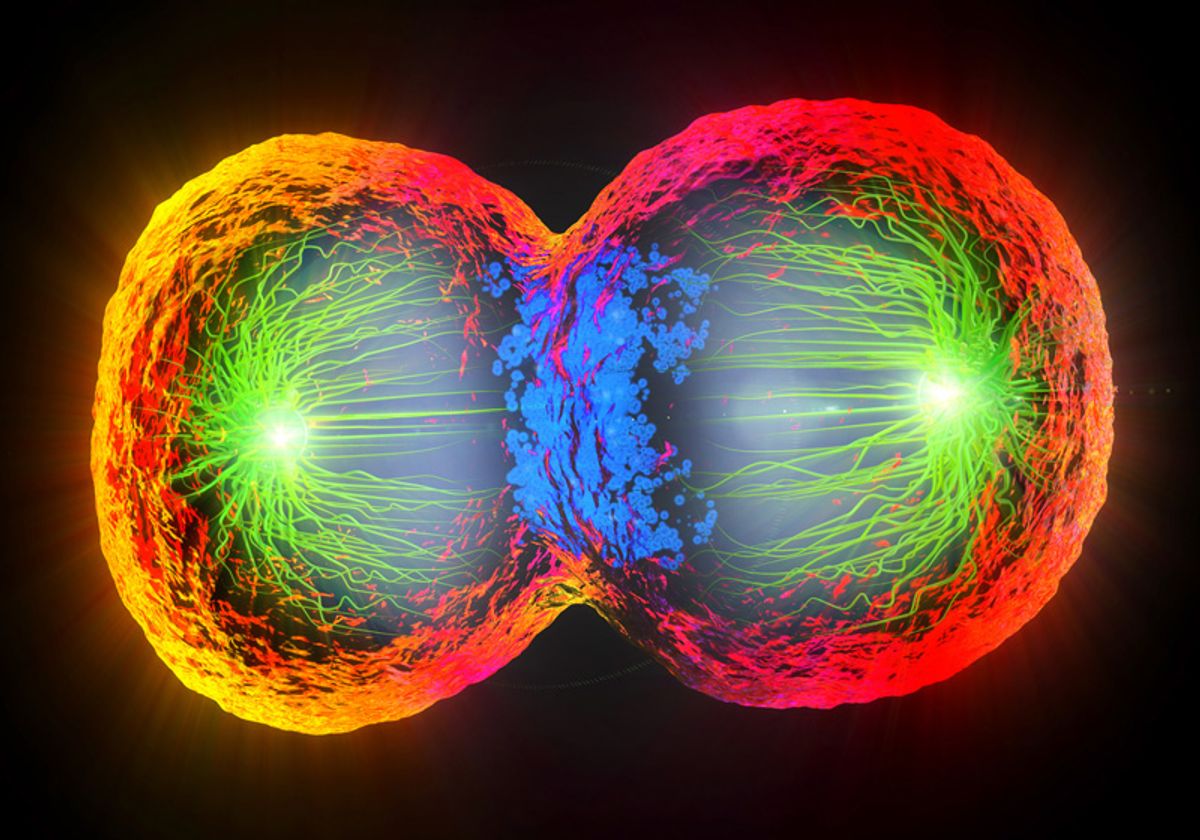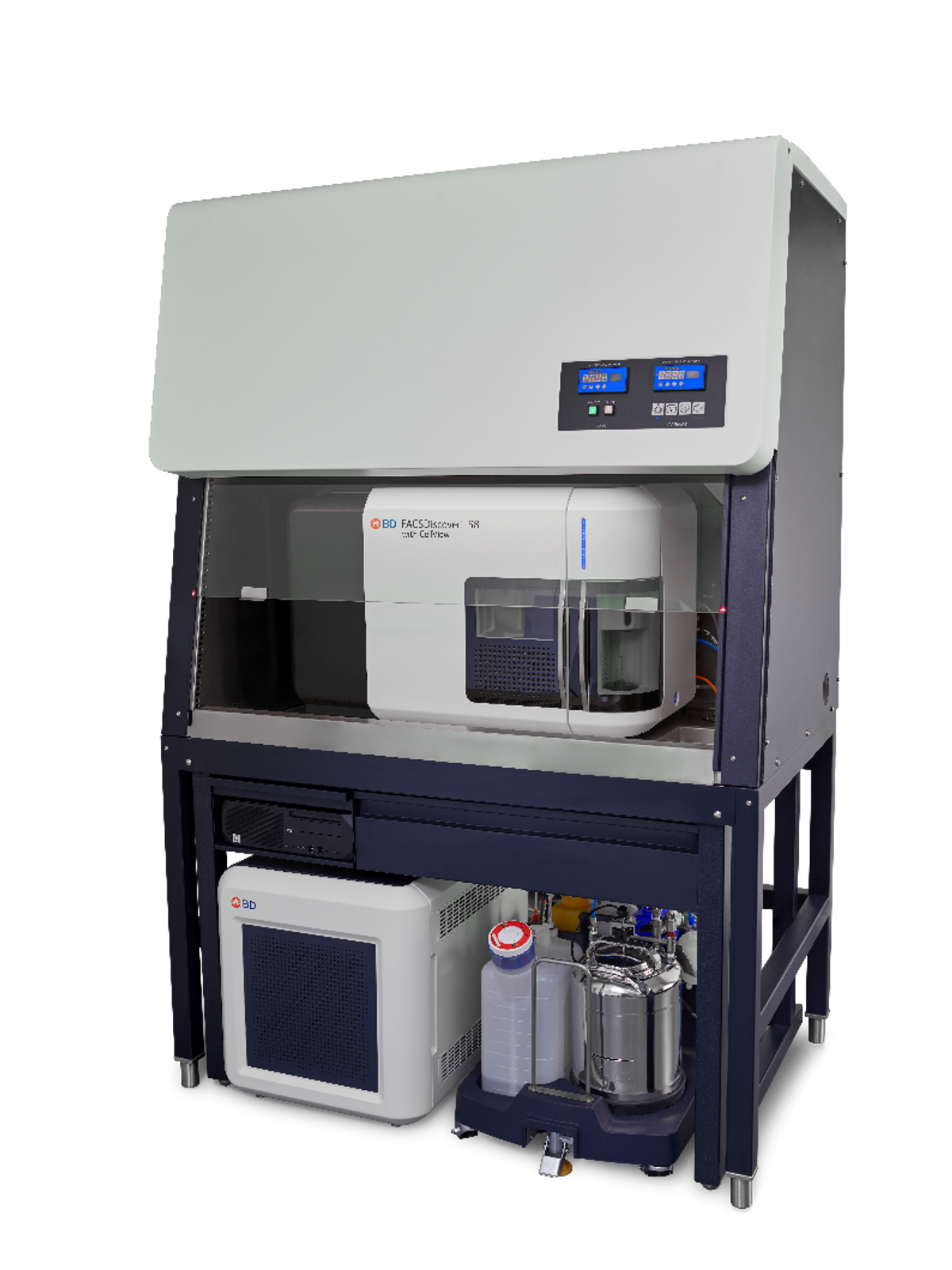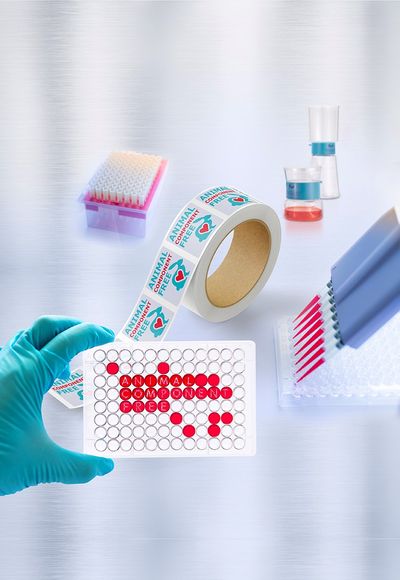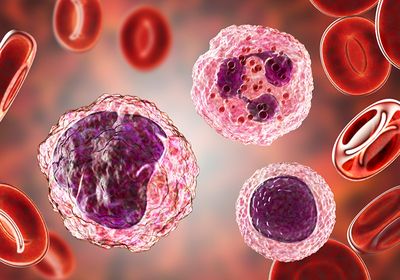Flow cytometry is a single-cell analytical technique that uses fluorophore-labeled cell structures or biomarkers to differentiate between cell populations. Through this method, researchers detect the fluorescence intensity of multiple cellular biomarkers, as well as the cell’s relative size and granularity. However, scientists can only use a limited number of fluorophores simultaneously, as it can be difficult to distinguish between fluorophores with overlapping emission spectra.
Flow Cytometry Variations
To increase its versatility, scientists created several flow cytometry variations, including fluorescence-activated cell sorting (FACS), imaging flow cytometry, and spectral flow cytometry.
FACS is a method that uses conventional flow cytometry to identify cell populations with specific features and allows the user to sort the selected group into a collection vessel for further propagation or analysis.1 This technique enables researchers to isolate a chosen cell type from a heterogeneous sample, activated cells from non-activated cells, or cells expressing a specific protein from non-expressing cells.
Imaging flow cytometry is a method that combines traditional flow cytometry with microscopy and permits the user to analyze a fluorophore-labeled cell’s fluorescence and morphology. In this technique, the instrument illuminates cells through filtered white light, producing brightfield conditions. Cameras then capture both fluorescent and brightfield images. Like microscopy, imaging flow cytometers allow scientists to determine a fluorophore’s intracellular and extracellular distribution. This technique also ensures that cellular debris and cell clusters are not included in the analysis.2 Furthermore, imaging flow cytometry is a high-throughput method, so researchers examine cells faster than microscopy-based imaging. Unlike traditional flow cytometry, the brightfield images also let researchers determine precise cell sizes instead of relative sizes.2
Spectral flow cytometry is an advanced version of traditional flow cytometry. In this method, the instrument analyzes a fluorophore’s entire emission spectrum, as opposed to only a small portion, like conventional flow cytometers.3 This enables spectral flow cytometers to discriminate between fluorophores with similar emission spectra, which increases the number of fluorophores that researchers can use simultaneously to separate cell populations.
While scientists have previously combined some of these methods, no instrument exploited all their advantages until recently.
An Innovative and Efficient Solution
The BD FACSDiscover™ Cell Sorter with BD CellView™ Image Technology and SpectralFX™ Technology from BD Biosciences is the first instrument that combines FACS, imaging flow cytometry, and spectral flow cytometry. The instrument integrates morphological information derived from real-time imaging with fluorophore-based data obtained from flow cytometry, which enables researchers to identify and sort cell subgroups.
The BD FACSDiscover™ S8 Cell Sorter uses its 78 fluorescent detectors to examine a fluorophore’s full spectrum, thereby maximizing the number of fluorophores that researchers can use concurrently. Moreover, the instrument permits high-speed sample sorting, where scientists can isolate six chosen cell populations into 5mL collection tubes. The real-time images allow the user to incorporate spatial information about the fluorophore and cell into the decision-making process required for sorting.
Through BD CellView™ Image Technology, the BD FACSDiscover™ S8 Cell Sorter uses its electronic and optical components to image cells without a camera, leading to faster imaging. Additionally, the instrument produces multicolor fluorescent images and brightfield-like images. Besides typical scatter and fluorescence analysis, the BD FACSDiscover™ S8 Cell Sorter enables scientists to assess 12 cell image features, including correlation, eccentricity, delta center of mass, and diffusivity.
Due to its versatility and optional placement within custom biosafety cabinets, researchers from fields such as cell biology, oncology, microbiology, and immunology can use the BD FACSDiscover™ S8 Cell Sorter to study several topics, including phagocytosis, tumor cell killing, and the cell cycle. Overall, the BD FACSDiscover™ Cell Sorter with BD CellView™ Image Technology and SpectralFX™ Technology incorporates the advantages of multiple flow cytometry variations to produce a versatile and innovative instrument.
References
- McKinnon KM. Flow cytometry: An overview. Curr Protoc Immunol. 2018;120:5.1.1-5.1.11.
- Han Y, et al. Review: Imaging technologies for flow cytometry. Lab Chip. 2016;16(24):4639-4647.
- Robinson JP. Flow cytometry: past and future. BioTechniques. 2022;72(4):159-169.








